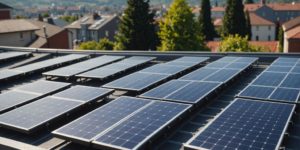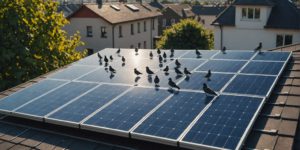As the cost of solar panels continues to decrease, many individuals are seeking ways to further reduce their expenses and make this renewable energy source even more affordable. While the declining trend in pricing can be attributed to factors such as increased competition and economies of scale, there are additional strategies that can be employed to achieve cost savings. By exploring tax incentives and rebate opportunities, considering alternative arrangements like Power Purchase Agreements (PPA), and carefully timing their installation, individuals can take significant steps towards reducing the cost of solar panels. Furthermore, evaluating competition and price comparison, exploring financing options, and even considering DIY installation can further contribute to cost reduction. Additionally, understanding the importance of maintenance and the longevity of solar panels can result in long-term cost savings. In this discussion, we will delve into these strategies and shed light on how individuals can successfully minimize the cost of solar panels while embracing a sustainable energy solution.
Factors Affecting Solar Panel Costs
The cost of solar panels can be influenced by various factors that contribute to their overall affordability and financial viability. One of these factors is evaluating competition and conducting thorough price comparisons. With increased competition in the solar industry, prices have been driven down, making solar panels more affordable for consumers. By researching and comparing prices from different solar panel manufacturers and installers, consumers can ensure that they are getting the best deal and maximizing their savings. Additionally, price comparisons can help consumers negotiate better prices and incentives from suppliers. It is important to carefully evaluate the competition and conduct price comparisons to make informed decisions and secure the most cost-effective solar panel system.
Tax Incentives for Cost Reduction
Tax incentives play a crucial role in reducing the cost of solar panels, making them a more financially viable option for homeowners. By evaluating eligibility and understanding tax laws, homeowners can take advantage of various incentives to offset the expenses associated with installing solar panels. One significant incentive is the federal income tax credit, which allows homeowners to deduct 30% of their solar expenses from their federal taxes. Additionally, some states offer their own tax incentives to further reduce the cost of solar panels. Taking advantage of these incentives can significantly lower the upfront investment required for solar power systems and shorten the payback period. It is essential for homeowners to research and understand the available tax incentives to maximize their savings and make solar panels a more affordable choice.
Rebate Opportunities for Lowering Costs
To further reduce the cost of solar panels, homeowners can take advantage of rebate opportunities that help offset the initial installation expenses. Exploring eligibility for these rebates is crucial, as they vary depending on the location and the specific programs available. Homeowners can start by researching state-wide rebate programs that may offer financial incentives for installing solar panels. Applying for rebates usually involves submitting the necessary documentation and paperwork to the relevant authority. These rebates can significantly lower the upfront costs of installing solar panels and make solar power more financially viable. Additionally, redeeming credits during periods of low solar energy production can further save homeowners money. By actively seeking out and utilizing rebate opportunities, homeowners can maximize their cost savings when investing in solar panels.
Power Purchase Agreements (PPA)
A Power Purchase Agreement (PPA) offers homeowners the opportunity to access clean energy without the upfront investment in solar panels. With a PPA, solar energy companies install, maintain, and own the solar panels on your property. This arrangement provides an alternative to traditional solar panel ownership.
The main advantage of a PPA is the immediate cost savings. Homeowners can benefit from clean energy without the burden of high upfront installation costs. Additionally, the solar energy company is responsible for the maintenance and repair of the panels, relieving homeowners of any associated expenses and responsibilities.
However, there are some drawbacks to consider. With a PPA, homeowners do not own the solar panels and therefore do not receive the financial benefits such as tax incentives or rebates. Furthermore, homeowners are locked into a long-term contract, typically lasting 10-20 years, which may limit their flexibility.
Timing Strategies for Cost Reduction
With the potential drawbacks of Power Purchase Agreements in mind, homeowners can explore timing strategies to further reduce the cost of solar panels. Consider the following strategies:
- Off-peak installation: Choosing to install solar panels during the off-season can result in competitive pricing. Contractors often offer promotions and discounts during the off-season to attract customers. By planning your solar installation during the off-season, you can save money and take advantage of lower costs.
- Seasonal discounts: Another way to reduce the cost of solar panels is by taking advantage of seasonal discounts. Many solar companies offer special pricing during certain times of the year. By timing your solar panel installation to coincide with these discounts, you can further lower the overall cost.
Evaluating Competition and Price Comparison
When evaluating competition and conducting price comparisons, it is essential to consider multiple factors to make an informed decision on the cost of solar panels. One important factor to consider is customer satisfaction. Look for reviews and testimonials from previous customers to gauge the quality and reliability of the solar panel provider. Additionally, analyzing market trends can give you insights into the pricing strategies of different companies. Are they offering any promotions or discounts? Are there any new entrants in the market that might offer competitive pricing? By evaluating customer satisfaction and analyzing market trends, you can make a more informed decision and potentially find a provider that offers high-quality solar panels at a competitive price.
Exploring Financing Options
To further explore the cost-saving potential of solar panels, it is crucial to consider various financing options that can make the investment more accessible and financially beneficial. Here are some options to consider:
- Exploring leasing options: Leasing allows you to enjoy the benefits of solar panels without the upfront costs. You can lease the panels from a solar company and pay a monthly fee for the use of the system.
- Understanding loan terms: If you prefer to own the solar panels, taking out a loan can help spread out the cost over time. It is important to carefully review loan terms, including interest rates and repayment plans, to ensure you choose the most advantageous option.
- Evaluating grants and incentives: Research local, state, and federal programs that offer grants, tax credits, and other incentives for installing solar panels. These can significantly reduce the overall cost of the system.
- Exploring community solar programs: Community solar programs allow multiple individuals or households to share the benefits of a single solar installation. This can be a cost-effective option for those who are unable to install solar panels on their own property.
- Considering power purchase agreements (PPAs): PPAs allow you to purchase solar power from a third-party provider at a lower rate. This eliminates the upfront costs of installing solar panels and provides a more affordable way to access clean energy.
Considering DIY Solar Panel Installation
Considering the potential cost savings and the increasing accessibility of solar panel installation, exploring the option of DIY solar panel installation can be a viable and empowering choice for homeowners. DIY solar panel installation allows homeowners to take control of their energy production and potentially save on installation costs. However, it is important to consider the pros and cons of this approach.
One of the major benefits of DIY installation is the potential cost savings. By installing solar panels yourself, you can avoid labor costs associated with hiring a professional installer. Additionally, DIY installation gives you the flexibility to customize the system to meet your specific energy needs.
However, it is crucial to prioritize safety when considering DIY solar panel installation. Handling electrical components and working at heights can be dangerous if not done properly. It is essential to educate yourself about the necessary safety precautions and to follow all local building codes and regulations.
Maintenance and Longevity for Cost Savings
Regular maintenance and ensuring the longevity of your solar panels are essential for maximizing cost savings and the efficiency of your solar power system. To achieve this, consider the following:
- Check the solar panel warranty: Understand the terms and conditions of your warranty to ensure you can take advantage of any repairs or replacements covered.
- Clean your solar panels: Regularly clean your panels to remove dirt, dust, and debris that can reduce their efficiency.
- Inspect for damage: Regularly inspect your panels for any signs of damage, such as cracks or loose connections, and address them promptly.
- Monitor performance: Keep track of your solar panel’s performance to identify any issues early on and take appropriate action.
- Schedule professional maintenance: Consider hiring professionals to conduct regular maintenance checks and ensure optimal performance and longevity.


